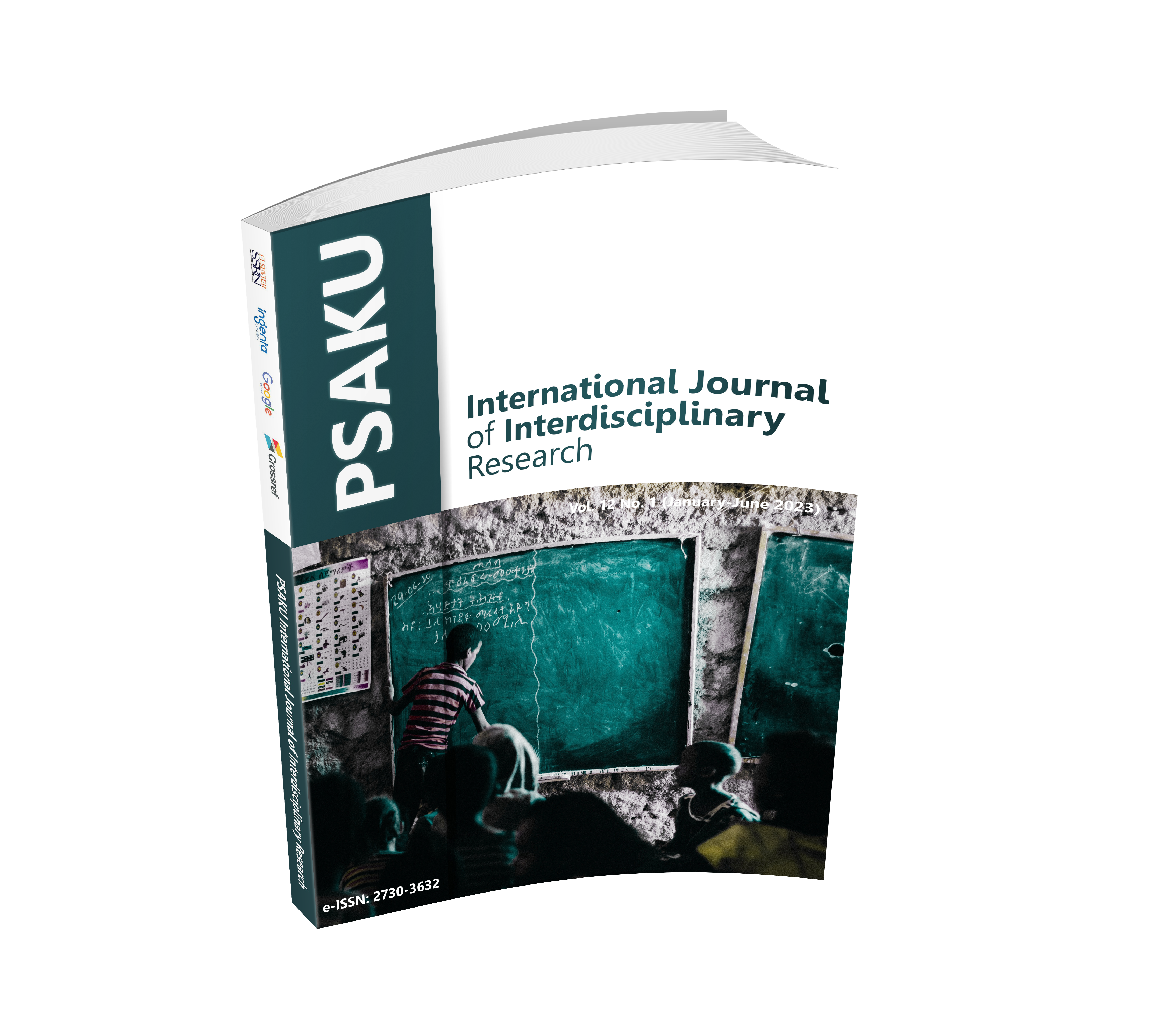LAYOUT DESIGN FOR DATA MANAGEMENT OF ELECTRIC VEHICLE SPEEDOMETER IN THAILAND
DOI:
https://doi.org/10.14456/psakuijir.2023.3Keywords:
Electric Vehicle, Ordering Information, User Experience, Design, Speedometer, Golden RatioAbstract
The research objective is to study the layout design for data management of electric vehicle speedometer in Thailand. This survey research uses questionnaires and the Item-Objective Congruence Index as a data collection tool. The data is collected through a single measurement. The sample population consists of electric vehicle users in Thailand whose vehicles are priced at no more than 1,500,000 baht, have been used continuously for at least 6 months, are between the ages of 20 and 40 years, and travel approximately 30 to 60 kilometers per day. A specific targeted sampling approach is employed. The data is collected and summarized to analyze and draw conclusion. The research findings indicate that the layout design of model 1 which utilizes an overall area for displaying data of 75.144%, received the highest popularity score. This design is capable of displaying data on meters greater than 75% of the total area, resulting in a 25% increase in display rate when compared to electric car meters currently available in Thailand and priced at no more than 1,500,000 baht. The layout design of the meter is based on the golden ratio theory allowing the sample group to comprehend information, understand its significance, and enhance confidence in safely driving electric cars in Thailand.
Downloads
References
Department of Land Transport. (2020). Statistics. Retrieved from https://web.dlt.go.th/statistics/.
Distner, M., Bengtsson, M., Broberg, T., & Jakobsson, L. (2009). City Safety-A System Addressing Rear-End Collisions at Low Speeds (Working Paper 09-0371). Sweden: Volvo Cars.
Ford. (n.d.). The Model T: Is Ford’s Universal Car that Put the World on Wheels. Retrieved from https://corporate.ford.com/articles/history/the-model-t.html#:~:text=The%20Model%20T%20was%20introduced,of%20manufacturing%20the%20universal%20car.
François, M., Crave, P., Osiurak, F., Fort, A., & Navarro, J. (2017). Digital, analogue, or redundant speedometers for truck driving: Impact on visual distraction, efficiency and usability. Applied Ergonomics, 65, 12-22.
François, M., Osiurak, F., Fort, A., Crave, P., & Navarro, J. (2021). Usability and acceptance of truck dashboards designed by drivers: Two participatory design approaches compared to a user-centered design. International Journal of Industrial Ergonomics, 81, 103073.
Gordon, K. (2021). The Golden Ratio and User-Interface Design. Retrieved from www.nngroup.com/articles/golden-ratio-ui-design/.
Hu, J., & Yeh, C. (2015). System Design and Implementation of Smart Dashboard for Electric Vehicles. Mathematical Problems in Engineering, 2015(Special Issue), 794395.
Kwon, Y., Choi, J., Jeon, J., Kim, K., & Jang, B. (2019). Design of Automotive Digital Instrument Cluster Adjustable to Driver’s Cognitive Characteristics. A paper presented at the 2019 International Conference on Information and Communication Technology Convergence, Ramada Plaza Hotel, Korea.
Manna, S., Pedamallu, R., & Kim, S. (2015). The Effect of Dynamic (Fisheye) Feature in a Speedometer on Driver's Speed Reading Performance. Procedia Manufacturing, 3, 2897-2904.
Persson, L., & Rundqvist, M. (2007). Design of instrument cluster for automobiles (Dissertation). Retrieved from https://urn.kb.se/resolve?urn=urn:nbn:se:ltu:diva-42821.
Söderholm, E. (2022). Hyundais hemliga nyckel hittad på nätet. Retrieved from www.vibilagare.se/nyheter/hyundais-hemliga-nyckel-hittad-pa-natet.
Thiparpakul, P., & Krutasaen, W. (2023). Prioritizing the Importance of Data Displayed on Dashboards for Electric Vehicle Driving Experience in Thailand. Journal of Communication Arts Review, 27(3), 54-63.
Wesner, G. (2002). 100 Years of speedometers. ATZ worldwide, 104, 2-5.
Zaffryna, Z. (n.d.). Cognition & Design. Retrieved from https://cognitionndesign.wordpress.com/zarith-zaffryna/.

Downloads
Published
How to Cite
Issue
Section
License
Copyright (c) 2023 Authors

This work is licensed under a Creative Commons Attribution-NonCommercial-NoDerivatives 4.0 International License.











.png)


